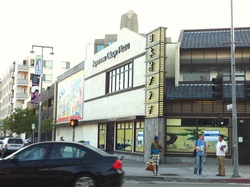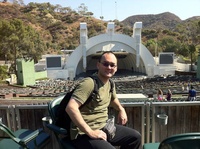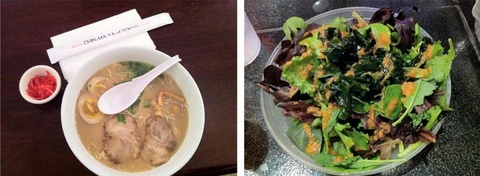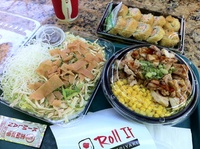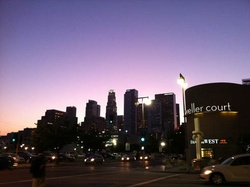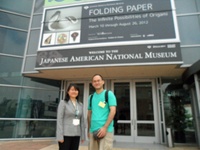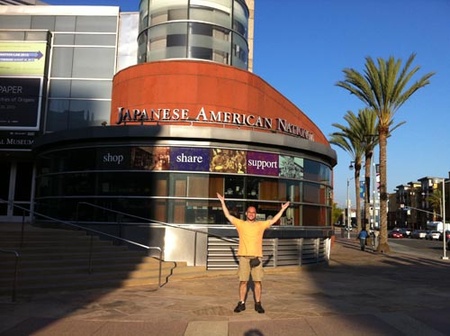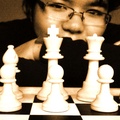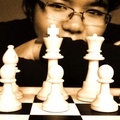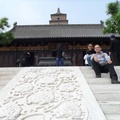Siempre un viaje es emocionante porque los lugares nuevos son motivadores por muchísimas razones: productos desconocidos para consumir, atracciones turísticas y para entretenimiento, otras formas de concebir una urbe, autos distintos, tiendas y marcas diferentes, costumbres y tradiciones desconocidas.
Los Angeles no fue excepción en ninguna de estas y muchas variables más.
Es una ciudad plana, larga, interminable porque detrás de las colinas hay mas y mas construcciones.
Como toda ciudad grande, esta es multicultural, generando distintas agrupaciones étnicas (aunque sean sólo en apariencia, porque todos somos iguales), también, manifestaciones de diversas culturas y mixturas de sus costumbres con las de otras culturas y con lo que se considera estadounidense –que no es, sino, una mixtura más, uniformizada, de todas las culturas, costumbres y tradiciones que forjaron el gran Sueño Americano de una buena vida en compañía grata (hoy desdoblado en materialismo, lamentablemente).
Es una ciudad grande donde los días se hacen pequeños, donde el viaje es corto por todo lo que hay para ver, experimentar, fotografiar (sin obsesión oriental).
Little Tokyo
Para nuestra sorpresa –de mi esposa y mía- estuvimos en un hotel en el centro de Little Tokyo (he aprendido a viajar sin investigar en exceso porque lo que da la Vida siempre será bueno). Un hotel excelente con muchos latinos trabajando dentro; el español siempre se pudo utilizar cuando la mente cansada estaba.
A la vuelta encontramos un Starbucks (nuestra cafetería preferida por su variedad y comodidad aunque no por su organicidad… naturalidad… es decir, sin aditivos químicos alimentarios aunque tiene excelsos cafés en grano); si seguíamos caminando nos encontrábamos con un minimarket y un supermercado con productos japoneses, después, un centro comercial con un montón de restaurantes y tiendas con importados japoneses.
Si seguíamos, otra plaza, Honda, con tiendas y restaurantes, uno chino, uno japonés, otro Starbucks y varias propuestas más.
Tantos restaurantes en pocas cuadras… no podíamos dejar de comer, todas las noches, en un lugar distinto ni de comprar productos cuyas etiquetas no entendía pero que podía suponer lo que tenían dentro por las imágenes (no aprendí japonés porque me lo impusieron, de chiquito, a través de una vieja soberbia).
Este viaje fue una grata experiencia de comensal complementada con parques temáticos y un sensacionalista Hollywood boulevard, entre otros, tan filmados, nombrados y fotografiados por décadas (como La Brea, nada interesante pero sí oliente y el fílmico Chinatown bien mantenido para grabar sendas escenas para películas… nos dijeron que no tocásemos nada, que todo estaba listo para grabar, que si rompíamos algo lo pagábamos… pero igual pudimos tomarnos fotos y ver todo el lugar).
Siempre regresando de las caminatas, una de esas noches comimos en Koshiji, otra en Kagura, la siguiente en Shin-sen-gumi (una nikkei de San Diego preguntó por ese restaurante en donde iba a encontrarse con amigas, justo después de que hubimos comido allí… dicen que es el mejor).
Otra noche fue en Chin-ma-ya y, finalmente, en Wakasaya; algunos estaban en Weller Court y otros en Village Plaza pero todos cerquita, fácil para los aficionados al comer y comer porque, como mangostas, se puede saltar de local en local probando distintos sabores y presentaciones y terminar en una casa de té para “bajar la grasa” (e ir a dormir con grata satisfacción aunque con digestión pesada como la mayoría de la humanidad hace a diario).
Faltan un montón de restaurantes porque nos faltaron noches para disfrutar de propuestas distintas; todos fueron platos ligeros para poder dormir porque el día siguiente iba a ser igual de agotador y emocionante.
Pero para las tardecitas, un yogurt frozen y repostería dulce en Yamazaki y Mikawaya, y para los desayunos tranquilos en la habitación, panadería de Mammoth bakery y bebidas a base de té verde (que no se consiguen en el Perú).

Pan esponjoso con fresa y queso (YAMAZAKI), Yokan maki - Mikasa - Chofu (MIKAWAYA), Uguisu-an pan (MAMMMOTH BAKERY)
Desayunar en la habitación es una gran oportunidad para probar todo lo posible encontrado en un supermercado (frutas de estación, repostería, bebidas importadas) y, también, se evita repetir el desayuno en el mismo restaurante del hotel todos los días. Cada opción incrementa la experiencia del viaje.
Y para el camino sea a pie o en bus, sendos productos japoneses comprados en Marukai market además de refrescos en botellas plásticas, bien fríos, para poder seguir avanzando hasta las tardes tranquilas alrededor de Little Tokyo, fresco, con muchos árboles y pistas y veredas limpias, con poca gente (¿dónde estaba el movimiento... o es que como van en autos no caminan?).
Al alejarnos unas cuadras, 4 ó 5, ya no era Little Tokyo sino algo parecido a un barrio chicano, saturado, con gente que mira a todos de arriba abajo, con tiendas saturadas con productos de baja calidad.
Esperando un bus por esta zona que se percibía insegura (no digo que lo sea), vimos a una mujeres “fáciles” salir de un auto blanco y quejarse porque un policía de tránsito les puso una multa por estacionarse entre 2 espacios y no poner una moneda en el parquímetro… en ese momento nos íbamos, en trasporte público, a Citadel outlet, donde encontramos una interesante propuesta, más sana que sus vecinos del food-court: Roll it, comida oriental fresca en una de las 2 ó 3 tiendas que tienen y ninguna cerca al Downtown de Los Angeles.
Esta es una ciudad donde –para un turista- hay mucho de oriental, chino y japonés, muy diferente a las propuestas elegantosas y refinadas en el centro de San Francisco (se percibe más “fácil” entrar a un restaurante en Los Angeles).
De regreso, la noche en Little Tokyo despertaba el movimiento de comensales (el hambre siempre llama): restaurantes llenos con jóvenes que a otro lado iban o, simplemente, se reunían para comer. Colas largas en varios lugares, esperando por una mesa; cuando ya estaban sentados, pedían y pedían, a veces doble orden alargando su estadía e incrementando la barriga.
Con los pies cansados, la cintura adolorida (por no saber caminar), esperábamos una ducha caliente para seguir paseando, conociendo, experimentando un día más.
Japanese American National Museum
Después de muchos años de escribir para Discover Nikkei, por fin pude visitar su sede, un bonito edificio de baja altura –a 2 cuadras del hotel- cerca al centro comercial de Little Tokyo.
Y, por fin, pude conocer a Yoko, con quien tantos e-mails he cruzado pero nunca habíamos hablado. Nuestra foto salió borrosa… ¿estábamos tan emocionados de conocernos por unos minutos?
Todo muy tranquilo y silencioso, con el bullicio lejano de buses y uno que otro auto que pasaba por la calle. Poca gente caminaba, el sol en bonito ángulo anunciaba el ingreso de la noche y, lamentable pero grabado en memoria (y sendas fotos), el fin del viaje.
Pero la experiencia continuó en casa con un montón de paquetes con té verde de distintas marcas y sabores, con chocolate con té verde y, más interesante, con la revisión de los recuerdos de todo lo vivido, comido, caminado y experimentado.
© 2012 Victor Nishio Yasuoka


